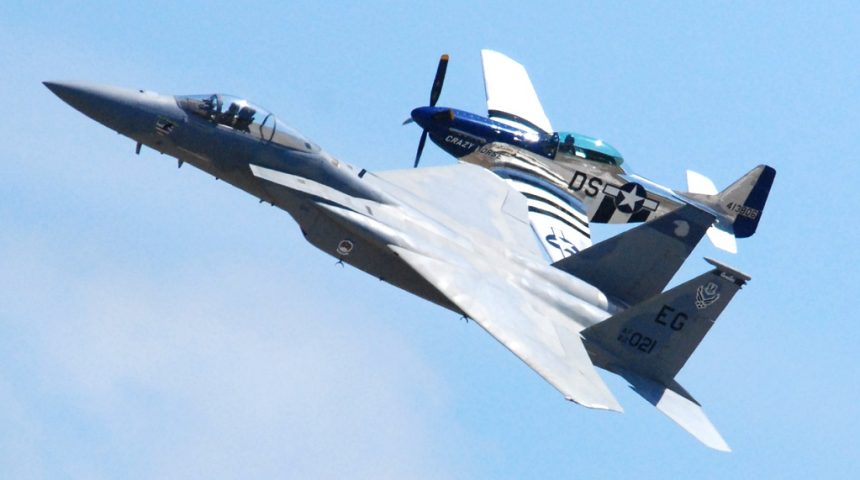The F-15C Demo Teams flew all over the world for 30 years and they were joined for a brief time also by an F-15E Demo team.
Reflecting on the 50th anniversary of the F-15 Eagle, this air superiority fighter has been for years the trademark of the U.S. Air Force in public culture, much like the F-14 Tomcat was for the U.S. Navy. As such, the Eagle always attracted a great deal of attention, being depicted in films, videogames, commercials and so on. But another thing that helped cement its reputation among the public was the F-15 Eagle Demonstration Team or, better, the three F-15 Demo Teams.
The U.S. Air Force initially established a first team in 1978/1979, the F-15 Eagle East Coast Demonstration Team, to showcase the capabilities of its newest air superiority fighter aircraft. In 1983, a second team, the F-15 Eagle West Coast Demonstration Team, was added to the roster and together the two teams performed around the United States and in selected airshows around the world.
During their shows, the demo teams performed an aggressive tactical demonstration of the F-15’s precise aerobatic maneuvering, high- and low-speed passes, rapid rolls and maximum performance climbs and descents, as the crowd gazed in awe. For these maneuvers, the Eagle unleashed the almost 50,000lbs of thrust generated by the two Pratt&Whitney F100-PW-220 engines, which provides more than 1:1 thrust to weight ratio.
In 2006, it was decided to add another single-ship team, the F-15E Strike Eagle Demonstration Team which, during the 15-minute show, demonstrated high performance take-offs, simulated attack runs on ground targets and how they avoid enemy fire with aggressive and precise maneuvers. This, however, would be the only year during which three F-15 demo teams were active at the same time.
In fact, at the end the 2006 airshow season, after 27 years of exhibitions, the F-15 Eagle East Coast Demonstration Team passed the torch to the newly created F-22 Raptor Demonstration Team. The F-15 team at the time was based at Langley AFB, Virginia, which was home of one Eagle squadron and two Raptor squadrons. Since for each demo they had to loan two jets from the squadron, it made sense to switch the Langley team from the F-15 to the F-22, as they would have more aircraft available without hindering the operational needs.
The West team continued to fly for some years out of Eglin AFB, Florida, where it retained the name “West Coast” for heritage purposes. They, in fact, originated from Holloman AFB, New Mexico, and moved to Tyndall AFB, Florida, before finally settling at Eglin. However, in 2009, the time came also for the F-15 West Coast Demonstration Team, which with a final flight, full of high-performance climbs, split-s turns, loops, knife passes and dives, completed a 26-year career. The choice was also dictated by the base moving on to establish the new F-35 joint training complex.
The F-15E Strike Eagle Demo Team from Seymour Johnson AFB, North Carolina, continued to fly at airshows until it met its fate in 2011, when significant defense budget cuts forced the USAF to make the difficult decision of grounding all demonstration teams but the F-22 demo team and the Thunderbirds. At the time it was said that the decision would allow the Air Force to reallocate more than 900 sorties to its fighter wings, a move intended to maximize flying hours for combat readiness training and provide an increase in more than 25 combat-ready fighter pilots.
To accompany this story, we found a video of one of the demonstrations of the F-15 Eagle East Coast Demonstration Team recorded in 2001 at the Westfield International Air Show, with also the cockpit view and the commentary from the pilot, Major Dan Blue, and the team’s speaker. The video gives you both the internal and external point of view of the display, showing off the raw power of the Eagle during its impressive and aggressive maneuvers.









